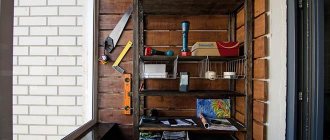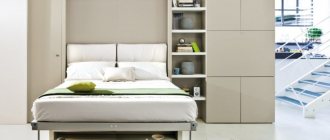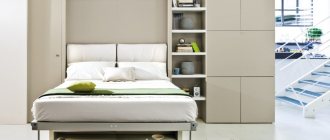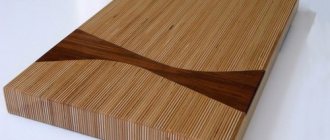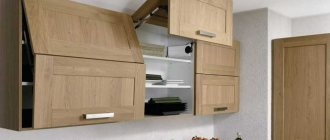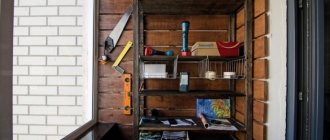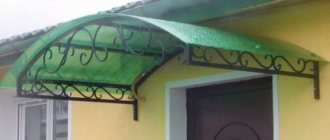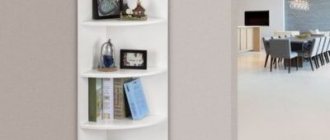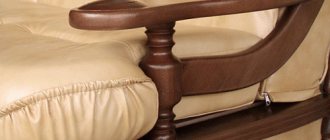Reupholstering a sofa is a rather difficult process, but sometimes necessary. Any upholstered furniture takes on a very unsightly appearance over time, and the sofa is no exception. Various damage and irremovable stains may appear on the upholstery, which makes it necessary to replace it.
Of course, with such a problem, you can contact a workshop and specialists will reupholster the sofa, but you will have to pay an impressive amount of money for some people. But you can take the opportunity to save money and reupholster your upholstered furniture yourself. This is what our article today will be about.
Do-it-yourself sofa reupholstery
When is it necessary to reupholster a sofa?
Damage to upholstered furniture can vary significantly, so it is recommended to first assess the severity of the problem.
Updating the sofa needs to be done in the following cases:
- The upholstery fabric has lost its original appearance. Typically, such damage is associated with the natural wear and tear process of any fabric. In addition, the material can be damaged by pets. This is the simplest type of damage; in this case, a standard replacement of the covers will be sufficient. The sofa has lost its appearance
- Presence of depressions in the seat. This problem is associated with wear and tear on the soft part of the sofa. In this case, you will need to replace the foam rubber and other layers. If there is a spring structure, it is sometimes necessary to replace or repair the spring units. At the same time, the upholstery does not always need to be removed (if it looks decent), but it will have to be washed.
- The bottom of the sofa is sinking. This happens when there is excessive load on the springs, which quickly penetrate a thin layer of fiberboard. In this case, the structure will have to be disassembled and the bottom replaced (it is better to use plywood).
- Frame deformation. The presence of various cracks in the base of the structure is a more serious problem. In this case, you will need to completely disassemble the sofa and replace the damaged bars.
Reupholstering furniture is much more profitable than buying a new product. In addition, thanks to reupholstery, you can change your sofa beyond recognition by choosing a different color and texture of the covering.
Video - How to get rid of a hole in the sofa
The story of remaking a sofa: 27 ideas after which I could not calm down for a long time
Remaking old furniture will warm the craftsman's soul and delight his family.
Recently, a couple I knew asked a woodworker to reupholster some simple Soviet chairs. He painted the wood either with special paint or varnish in a rich emerald shade. I chose avant-garde upholstery - green with silver apples... What a miracle it turned out! There was trash, natural decay, and now there is new stylish furniture, both antique and unique. No one else has one like this. And what savings!
I offer you ideas for repurposing old furniture that can lead to an interesting transformation. Why not paint your dining table with acrylic paints? Moreover, the table is already 20 years old, and you have artistic talent.
Types of sofa designs
Table 1. Seat and backrest manufacturing options.
| Option | Description |
| Without springs | On dense furniture foam rubber or latex foam. The second method is considered more practical and convenient, but has a high cost. |
| With springs | With standard springs assembled into a single unit, or with snake springs that support a soft base. These types of structures are the most common. |
The sofa may have a multi-layer structure, which must be studied before reupholstering.
It should be borne in mind that there are other additional layers. For example, modern designs are supplemented with layers of felt and synthetic padding, while older models were stuffed with horsehair, burlap and similar materials.
For the inner layer you need to purchase padding polyester in a roll.
Design of computer desks in the shape of an angle
The design of a corner computer desk should not only be beautiful and modern, but also multifunctional. The work requires a lot of free space where you can place everything you need for it. Organize storage shelves, add drawers and don't forget about light.
With lockers
A table with cabinets will hide things from prying eyes and help keep your work supplies organized.
With add-on
This type of design includes stands for speakers and a pull-out shelf for the keyboard.
With rack
There is a lot of free space on the shelves; you can place accessories or books there.
Glass
Glass construction is a reliable and stylish option in a modern interior.
With nightstand
A computer desk with a bedside table will accommodate all the equipment; bedside tables can be used for their intended purpose for storing various things, not necessarily office supplies.
With a pencil case
A corner computer desk with a pencil case will look great in an office and will be easy to use for schoolchildren.
Semicircular
This type of design provides access to the entire surface of the tabletop and is safe for children.
The photo shows a design with a semicircular corner computer desk and hanging drawers for storing things.
Standard version of the sofa with a zigzag block
In order to properly reupholster a sofa, you need to know the exact location of the layers of material. In the standard version of the product, the following sequence occurs:
- Plywood frame or wooden slats. Of course, the first option is more durable, but has a high cost, so pine slats or bars are often used to make the frame. They are fixed to each other through grooves using glue. Sometimes, for greater reliability, the structure is reinforced with metal corners.
sofa frame - The base is under the block (spring). For such purposes, special planks are used - lamellas, plywood and fiberboard. The first option is the most expensive, so craftsmen, trying to save money, use plastic strips, which quickly crack. Another option for reducing the cost of a sofa is to install slats with large gaps, as a result of which the structure quickly loses its elasticity and the slats sag greatly.
- Spring block. The design can be with independent or dependent springs. In the second case, the sitting will be more comfortable; it is also called massage.
- Felt or any thick fabric. The presence of such a layer prevents deformation of the foam rubber by springs.
- Furniture foam rubber. It is important that in addition to density, such a material is durable. This means that after any load it should recover quickly. In case of replacement, thicker material can be used, but this is not possible with a folding design. Durable furniture foam
- Sintepon. This soft lining prevents the foam from rubbing with fabric. To prevent it from forming into lumps during use, it is usually fixed to the previous layer with glue.
- Fabric covering. It can be anything, but when choosing a new one, choose dense materials that will not crumble or deform during processing.
Important point! Some craftsmen prefer to line them with a double layer of padding polyester for greater softness.
Preparation of tools and materials
You will need an electric screwdriver to assemble and disassemble the sofa. A screwdriver may not help remove an old screw that is firmly embedded in the wood. To dismantle the bolts and nuts, you need wrenches (No. 8 - 20).
Other tools:
- anti-stapler (removing sheathing), construction stapler, staples No. 8 - 10;
- hammer, side cutters, pliers, knife;
- sewing machine;
- square, scissors, large ruler (from 1.0 meters), measuring tape;
- thick fabric needles No. 120, thread;
- chalk, glue.
Fabrics suitable include matting, tapestry, jacquard, eco-leather, flock, velor, vinyl artificial leather. For the filler, use synthetic winterizer, foam rubber, or polypropylene.
For protection , canvas and burlap are used, which are laid out on springs and under them so that the layer of plywood and filler is not pressed through. You will need wooden blocks, usually a section of 50 x 80 mm, but it varies depending on the installation location and the design of the sofa.
Dismantling the sofa
The process of reupholstering a sofa should begin by disassembling it. At this stage, the extent of damage to the various layers of the structure can be assessed, for which the following tools will be required:
- screwdriver for bolts (if present);
- staple remover or flat-head screwdriver (to remove upholstery);
- measuring tape (measuring the thickness and height of the pillows).
Step one: reupholstering folding products necessarily requires reaching the same height of the backrest and seat, because the mechanism is designed only for certain parameters of the pillows. It is necessary to take measurements from the pillows in advance if they are to be replaced.
We take measurements from pillows if they are supposed to be replaced
Step two: separate the fabric from the sofa frame using a screwdriver or staple remover. If the staples are difficult to remove, you can use pliers at this stage. If the fabric is to be reused, it should be separated with extreme care. Moreover, if there are even minor signs of wear, then it is better to replace the upholstery, otherwise in a few months the sofa may need a new reupholstery.
Removing fabric from the sofa
Step three: remove various contaminants and separated fragments of filler. At this stage it is necessary to assess the scale of the problem. It is advisable to keep the frame and all its layers in the same form (if possible). In some cases, replacement of obsolete materials will be required.
Freeing the frame from fillers
Step four: carefully examine the condition of the spring block (if the sofa assumes the presence of springs). A fairly common problem is the springs breaking, causing them to bulge. In addition, it is often necessary to observe the breakdown of fiberboard on the frame itself. If the above damage is present, the unit should be dismantled. It is fixed to the frame frame using metal brackets, so the procedure is performed using a flat screwdriver.
Broken spring Breakage of fiberboard on the frame Option for breaking a sofa with zigzag springs, which should give elasticity to the seats
Placement of pillows
Many designers recommend using three to six pillows when decorating a sofa. This will create a harmonious composition - a small number of pillows will look like an unfinished image, too many elements will look strange or even vulgar.
As for the arrangement of pillows, elements arranged in a certain order will look more aesthetically pleasing. Place them in the corner of the sofa, creating a whole composition.
Sofa restoration
After removing the old upholstery and disassembling the structure, you can begin the repair itself. The extent of work to restore the sofa will depend on the complexity of the damage; below we will look at the most common of them.
Frame repair
You will need to prepare the following materials and tools:
- wooden blocks (to replace damaged ones);
- plywood sheets;
- metal dowels;
- wood glue;
- vice;
- nails.
Step one: replace the damaged frame elements with new wooden blocks. It is important to pre-condition the material for several days at room temperature.
Replacing old unusable bars
Step two: take a wooden frame using the same tenon and groove principle, using glue. It is better to further strengthen the structure with the help of metal caps.
Use of metal chokes
Step three: for the base of the spring block, you can take sheets of plywood 150 centimeters wide and about 200 centimeters long. Next, you need to cut out two rectangles according to the dimensions of the structure, then place them on the frame (pre-coat them with glue). Then the plywood should be carefully nailed. It is important to choose the optimal length of nails so that they do not protrude from the outside of the frame. The junction of the sheets should be reinforced with a strip.
Plywood for base
Repair and fastening of the spring block
To work you need to prepare the following:
- U-shaped brackets (you can buy them at a hardware store or make them yourself from wire);
- nylon banners;
- strong thread;
- awl;
- hammer;
- felt or any durable fabric.
Brackets for fixing springs
Step one: fix the springs using metal brackets with sharp ends, after which they need to be hammered in. An ordinary stapler cannot cope with such a process.
Fixing the springs
Step two: the springs must be additionally secured with nylon constrictions. You can use a thick rope, which is secured with the same brackets. In this case, it is important to achieve optimal tension so that it does not deform the springs.
Nylon thread for attaching springs
Step three: felt should be placed as the top layer. If you don't have one, you can even use old carpet. For greater density, it is advisable to take a double layer of material and then cut it to size. It is fixed using the same dense thread, and holes are made with an awl or a nail. A distance of 35 millimeters is maintained between stitches.
Holes can be made with an awl
Step four: a layer of foam rubber is laid next, and then padding polyester. Along the entire perimeter, the materials are fixed with glue and then hammered in with nails.
If you are on a limited budget, you can use an old but thick blanket
Interior styles
In a room made in ethnic style, pillows and other decorative elements depicting landscapes and national patterns will look advantageous. Embroidery would look perfect here.
- For country or Provence style, choose blankets and pillows made in the style of patchwork.
- The classic style is quite universal - pillows of any color and shape are suitable for such a room.
The main thing is that they are in harmony with the rest of the interior elements.
For modern, minimalist, and high-tech styles, plain pillows are suitable.
Sofa cover
If the old sofa cover has become unusable, it will need to be replaced with a new one. This is the most interesting and creative stage of reupholstering a product.
What material to choose for upholstery?
First you need to decide on the type of fabric. An important condition is not only the decorative appearance, but also the good resistance of the fabric to various damages.
Table 2. Types of fabrics for upholstery of upholstered furniture.
| View, illustration | Description |
| The obvious advantages of such a material include resistance to wear and a noble appearance. But at the same time, it is not always possible to find leather of decent quality on sale; moreover, such material has a rather high cost. |
| An equally common material that is often used for upholstering upholstered furniture in a children's room. The main argument in favor of purchasing this fabric is environmental friendliness. In addition, cotton has a budget price. |
| This is an excellent choice of material for upholstering a sofa, because jacquard is wear-resistant and does not wear out over time. The only drawback of this option is the high price. |
| Flock | Pet lovers will especially appreciate this material. Claw marks are absolutely invisible on its surface. Flock is completely safe, environmentally friendly, and, if necessary, various contaminants can be quickly removed from such a velvety surface. |
| Tapestry | Sofas were covered with this material several centuries ago. It has an attractive appearance and a variety of shades and their combinations. The main disadvantage of the fabric is its poor resistance to ultraviolet rays, so this sofa is not recommended for installation on a terrace or veranda where the sun hits. The price of tapestry fabric is quite high, which is also a disadvantage. |
| Chenille | This material is produced on an adhesive or fabric basis. In the first case, the fabric may become deformed upon contact with water. The second option is more reliable and does not lose its appearance even with wet cleaning. |
| Belongs to the category of the most popular materials for covering upholstered furniture. It is often chosen due to its good quality at low cost. Velor has a long service life and a soft surface that is pleasant to the skin. |
| This is a budget option for creating a leather-like sofa. This material consists of a cellulose base coated with polyurethane. Faux leather does not deform when exposed to sunlight; moreover, it does not require special care - it is enough to wipe it with a damp cloth. On sale you can find quite high-quality options for such material, for example, eco-leather. Its feature is the ability to pass air. |
Important point! Of course, the first priority is to choose a durable material that will last for many years. But it is not recommended to purchase too coarse fabrics - hard, unpleasant to the touch materials. They not only reduce the pleasure of contact with the furniture, but also give the sofa an even older look.
A sofa is furniture for relaxation, and it should be comfortable.
An equally important point when choosing fabric is the room where you plan to use the sofa. For example, if we are talking about the kitchen, then you should immediately abandon all kinds of fabric options - they will quickly become unusable if food or liquids regularly get on them. You should not choose textile covers for various outdoor sofas, because they cannot repel moisture. Leatherette of any type is ideal for such conditions.
Pattern of covers
Once the fabric has been selected, you can begin the pattern making process. This is a very important stage of reupholstering a sofa, which is usually given special attention.
Table 3. Methods for creating a pattern
| Way | Description |
| It is necessary to attach all the dismantled upholstery parts to the fabric and cut out the parts according to this sample. Do not forget that for connection you should leave a distance of about 5 centimeters around them. You can first attach such a pattern to the frame, and only then cut it out. |
| To take measurements, it is necessary to remove all small elements from the sofa, including: pillows, armrests. After which they are measured, adding 5 centimeters on each side, and then these values are transferred to the fabric. Each cut piece will need to be placed on a specific spot on the sofa to ensure the measurements are correct. This method is labor-intensive, so it is used less often. |
Important point! Experienced experts recommend checking the correct measurements several times before creating a pattern - this will avoid further problems with the upholstery of the sofa.
Sewing covers
In order to sew high-quality sofa covers, you need to have basic cutting and sewing skills. Otherwise, you can only ruin the material.
Important point! If the material is too expensive, it is better not to take risks and contact a studio that specializes in making covers.
Step one: all parts (especially those with large pile) should first be swept by hand so that they do not move.
Large parts must be swept by hand
Step two: after the sour cream parts should be sewn on a sewing machine according to the outline.
Next we will use the machine,
Step three: the edges of the stitched covers must be processed with an overlocker. If you don't have it, you can use a zigzag.
Finishing edges with overlock
Important point! In the process of sewing covers made of genuine leather or leatherette, difficulties may arise with the needle, so the surface of the fabric under the foot of the sewing machine is treated with oil.
Securing the covers
Upon completion of all repair work to restore the structure and after sewing the covers, you can begin the final stage - reupholstering the sofa with fabric. The final appearance of the product will depend on the correctness of such actions. In this matter, it is important not to rush and be patient.
Step one: if the design of the sofa involves the presence of decorative buttons, then their location should be marked on the foam rubber. Next, you need to fix the foam rubber on the frame and put a layer of batting or padding polyester on top of it, fixing it with glue.
Markings on padding polyester
Step two: after that you need to try on the covers on the frame of the sofa again, because it is at this stage that you can still adjust the parts to the required sizes (if necessary, even sew up the corners of the covers). Do not be afraid if the cover is difficult to put on the structure, because during upholstery it must be pulled as tightly as possible.
Trying on covers
Step three: upon completion of all sizing work, you need to pull the covers back onto the frame and carefully straighten them. In this case, even seams should be located along the edges of the parts. At this stage, on the back side, which is not yet covered with upholstery material, you should fasten the decorative buttons along the marks, threading them through to the front side.
Final sizing
Step four: now you can begin the process of attaching the covers with staples - a special stapler is used for this. This should be done carefully, constantly pulling the fabric with one hand. The bevel should be smooth in the form of a circle (especially when processing armrests). It is recommended to start fastening with staples from the middle part, which will allow you to sew in excess fabric along the edges if necessary.
Attaching the covers
Step five: when covering the back of the sofa, you must carefully use scissors to make holes for attaching the bolts. In addition, it is recommended to additionally hammer the staples.
The staples must be firmly driven into the base
Step six: upon completion of the stretching, it is necessary to secure a dense lining material on the wrong side. After stretching, it is also fixed using a stapler.
The finished sofa after finishing the covering
We do it on the balcony or gazebo
With a corner sofa on the balcony and in the gazebo, you are guaranteed comfort. On warm summer evenings it will be very pleasant to gather with the whole family or invite friends.
Such a sofa can be created from ordinary and familiar pallets. Another name is pallets.
All the work consists of building the necessary structure from the boxes and fastening them. However, for aesthetics, it is necessary to pre-treat the pallets in any convenient and suitable way for the interior - sanding, painting, varnishing, creating an aging or glossy effect, decoupage, drawing. Whatever comes to mind and matches the fabric will do.
Then you will need to make a seat. Stack several pallets on top of each other until you get the height and length you need. Fasten them together with self-tapping screws. You can put solid sheets of plywood between the drawers and get additional shelves for storing things.
Then you should do the back. Place the pallets vertically relative to the seat to create an “L” shape.
Cover the resulting frame with plywood or chipboard sheets. Next, you can cover the elements with foam rubber or make removable seats - without attaching the plywood to the pallets, cover them with foam rubber and fabric. If necessary, they can simply be removed. Next, sew the necessary elements - pillows of different sizes, armrests. Such sofas are relevant for a gazebo; in rainy weather and the cold season, the pillows can be removed.
A corner sofa is a godsend for a large family and a small space. It creates an atmosphere of comfort in any room - be it an apartment or a gazebo. Thanks to the large seating area, it can serve as both a bed and a resting place for a large company.
Below is a video that will help you quickly and easily assemble the frame of a corner sofa.
The Drawings Storage section is mostly intended for experienced craftsmen. Here you can download drawings and designs of sofas and armchairs, installation diagrams for mechanisms and books about upholstered furniture. If you need detailed lessons on making upholstered furniture, see the instructions in the How to make a sofa section.
Disclaimer: some projects in this section were found in open sources and are provided as is. I do not give consultations or advice on the drawings in this section, and I am not responsible for the consequences of their use. Download and use at your own discretion. Copyright holders contact here.
Drawings for assembling a children's roll-out sofa. 7 pages.
Step-by-step assembly of the sofa frame. 8 pages.
Rocking chair made of plywood sheet. Drawings in pdf and CorelDraw formats plus photographs of manufacturing stages with comments from the author.
Eurobook sofa on a spring block. 327 photographs of the manufacturing process, without dimensions. 200MB
Drawings of the base of the Soviet chair. 3 sheets
Corner sofa (full set of documentation) Photo, specification of parts, chipboard cutting map, project file in pro100
3D project of the Eurobook sofa in the pro100 program format
Advantages of reupholstering furniture yourself
Restoring upholstered furniture with your own hands has obvious advantages:
- Possibility to choose any fabric for upholstery and subsequent decoration of the sofa.
- Reupholstering a sofa is not only a good way to improve the appearance of the product, but also an opportunity to immediately repair the frame.
- Most models of sofas made in the USSR are distinguished by a strong frame, which cannot be said about some modern options. That is why many craftsmen prefer to use such designs as a basis.
- Restoring an old sofa will require minimal costs, especially if you do not have to involve workers. In addition, some of the inner layers can be replaced with old unnecessary materials.
Add decorative elements
Another way to repurpose an old sofa is to add decorative elements to it. For example, buttons. If you sew buttons onto the cushions of the sofa, it will give it a completely different look. You will have to find decorative buttons that match the color of the sofa material. Count how many buttons you will need for each pillow. Carefully mark where exactly you will sew them. Take a thick needle and strong thread. Sew on the buttons. Now your sofa looks like new.
All of the above methods do not require special skill or large financial investments from you. If you want dramatic changes in the appearance of your couch, then you will have to paint or reupholster it.
Let's sum it up
If an old sofa has lost its original appearance, you should not immediately buy another one when you can try to restore it. Following the instructions will allow you to give the structure any shape, and purchasing new fabrics will update not only the sofa itself, but the entire interior!
You may be interested in information on how to assemble a sofa yourself at home. In a special article we will look at various options for modern sofas and assembly instructions.
Buy a new case
If your sofa was purchased in stores like IKEA, then, as a rule, you can also buy a replacement cover for it there. Such hypermarkets often sell covers of different colors for standard sofas sold by them. There is no need to think about complicated options on how to update an old sofa. Buying a slipcover is one of the easiest ways to make your sofa unrecognizable.
If your sofa does not have a completely suitable cover, then you can buy a more or less suitable one and, after making some changes yourself, adjust the cover to the sofa. And if you are good at sewing, you can sew such a cover yourself. This option is even better than buying a cover, because then you can choose any material you like.

